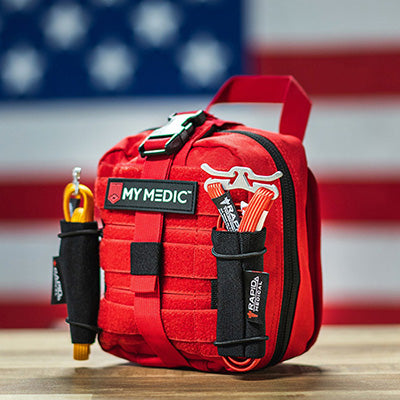When emergencies happen, injuries often follow. From minor cuts to life-threatening trauma, having a reliable first aid strategy is essential for every prepper and emergency planner. In any survival scenario, your ability to respond quickly and correctly can mean the difference between recovery and catastrophe.
Why First Aid Matters
In a disaster or off-grid event, professional medical help may be hours—or days—away. Until help arrives, you are the first responder. Knowing how to manage wounds, stop bleeding, treat burns, and address infections keeps small problems from becoming life-threatening emergencies.
Key Components of a Survival First Aid Plan
- Comprehensive First Aid Kits: Stocked with bandages, antiseptics, gloves, tourniquets, trauma shears, and more. Always keep one in your home, vehicle, and bug-out bag.
- Bleeding Control Tools: Tourniquets, chest seals, compression bandages, and clotting agents are must-haves for severe trauma and gunshot wounds.
- Burn Treatment Supplies: Burn gels, dressings, and sterile wraps for handling fire-related injuries.
- Over-the-Counter Medications: Pain relievers, antihistamines, antidiarrheals, and fever reducers.
- Prescription Medications: Secure an emergency supply of critical meds such as insulin, heart medication, or antibiotics if possible.
- Infection Control: Antiseptics, hand sanitizers, gloves, and wound irrigation tools to prevent infection.
- Hygiene & Sanitation Items: Soap, sanitary wipes, menstrual products, and toilet paper to maintain cleanliness and health.
Essential First Aid Skills to Learn
- CPR & AED: Basic life support for cardiac and respiratory emergencies.
- Bleeding Control: Applying direct pressure, using tourniquets, and packing wounds.
- Splinting & Immobilization: Stabilizing fractures and sprains with minimal gear.
- Burn Care: Treating minor to moderate burns safely in the field.
- Recognizing Shock: Identifying and managing the signs of shock, which often accompanies trauma.
- Improvised Medicine: Using everyday items like duct tape, clothing, and sticks when supplies run low.
Recommended First Aid Gear from Mountain Ready
- My Medic – MyFAK First Aid Kit
- Trauma Kits with Tourniquets & Chest Seals
- Stay Alive First Aid Guide – Digital Download
- View All First Aid Essentials
Where to Store Your Kits
- Bug-Out Bag: A compact, portable kit ready to go in seconds.
- Vehicle Kit: A larger kit designed for roadside emergencies, accidents, or SHTF travel.
- Home Medical Station: A fully stocked, wall-mounted or tote-based setup for long-term emergencies.
Prepper Tip
Prepper Tip: Inventory your kits every 6 months. Replace expired meds, restock used supplies, and check batteries in devices like thermometers and flashlights.
Training is Just as Critical as Gear
Gear alone isn’t enough. Consider hands-on training through:
- STOP THE BLEED® certification
- CPR and AED classes from local fire departments or the Red Cross
- Wilderness First Aid or Wilderness First Responder courses
Common Mistakes to Avoid
- Buying a kit but not learning how to use it
- Storing it in an inaccessible location
- Neglecting personal medications or specialty needs (like EpiPens)
- Forgetting eyewear, contact solution, or dental repair kits
Final Thoughts
Your first aid kit is your lifeline when emergency strikes. Building a medical plan that includes gear, knowledge, and redundancy gives you a serious survival edge. In many cases, you'll need to treat injuries and keep moving—especially when help is far away or unavailable. Don’t cut corners here. Invest in quality kits, get the training, and practice your response.
At Mountain Ready, we only carry the gear we’d trust with our own lives. From tourniquets to trauma kits, we’ve got you covered.


